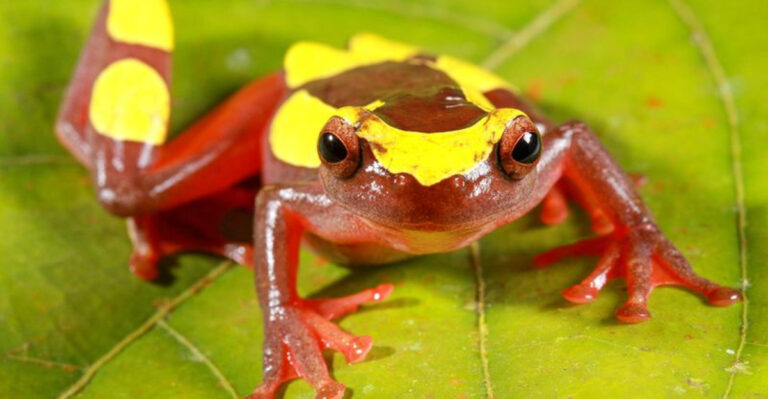10 Aquatic Animals That Light Up the Ocean (And 5 That Thrive In The Deepest, Darkest Waters)
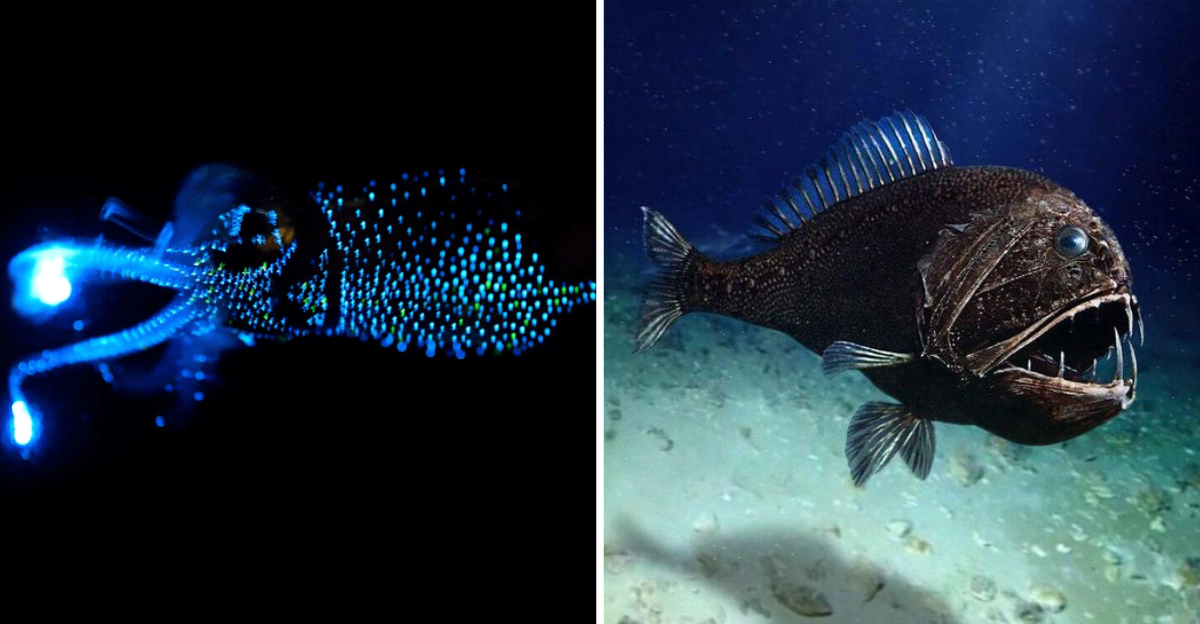
The ocean is full of mysterious creatures that have adapted to its unique environments in fascinating ways.
Some marine animals have developed the ability to create their own light through a process called bioluminescence, turning the dark waters into a magical light show. Others have evolved to survive in the crushing depths where sunlight never reaches.
These remarkable creatures reveal nature’s incredible ability to adapt to even the most extreme conditions on our planet.
1. Crystal Jellyfish – Nature’s Living Lantern
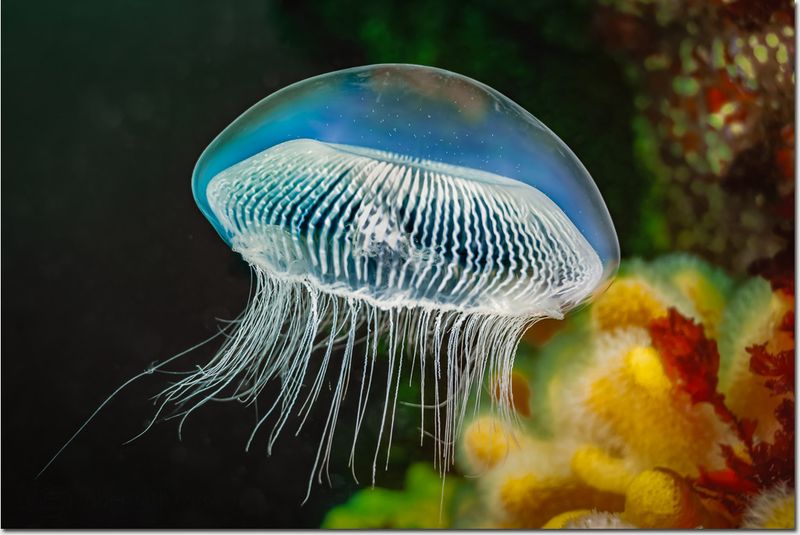
The crystal jellyfish looks like a floating glass ornament with a blue-green glow that pulses through the water. These transparent creatures use their light not just for show but as a clever defense mechanism – when disturbed, they flash brightly to confuse predators and make a quick getaway.
What makes them truly special is the green fluorescent protein in their tissues, which has revolutionized medical research. Scientists now use this protein to track everything from cancer cells to brain activity. Though only about 10 centimeters wide, these jellies have made an enormous impact on both ocean ecosystems and human science.
2. Anglerfish – The Ocean’s Clever Fishing Expert
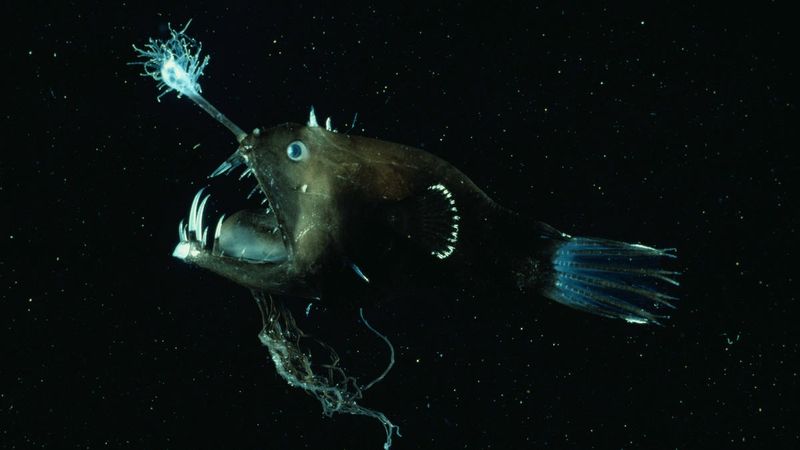
Female anglerfish carry their own fishing rod – a modified fin spine topped with a glowing lure that dangles above their massive jaws. This natural flashlight attracts curious prey in the pitch-black deep sea, luring them right into the anglerfish’s tooth-lined trap.
Males don’t need fishing skills because they have a different survival strategy. When a tiny male finds a female, he bites into her body and literally fuses with her, becoming a permanent parasitic mate! The female can carry multiple males, ensuring she always has sperm available when it’s time to reproduce. Talk about a weird dating scene!
3. Vampire Squid – Mysterious Red-Eyed Performer

Despite its terrifying name, the vampire squid isn’t actually a blood-sucker! This ancient creature lives in the ocean’s “oxygen minimum zone” where few predators venture. When threatened, it performs one of the ocean’s most spectacular light shows – wrapping its webbed arms around its head and activating light organs that make it look like a spiky, glowing pincushion.
The vampire squid can also eject glowing mucus clouds that confuse attackers while it escapes. Unlike its squid and octopus relatives, it doesn’t hunt – instead, it collects “marine snow” (falling organic particles) with special filaments. With its red eyes and jet-black skin, this living fossil has remained virtually unchanged for 300 million years!
4. Firefly Squid – Japan’s Living Light Festival
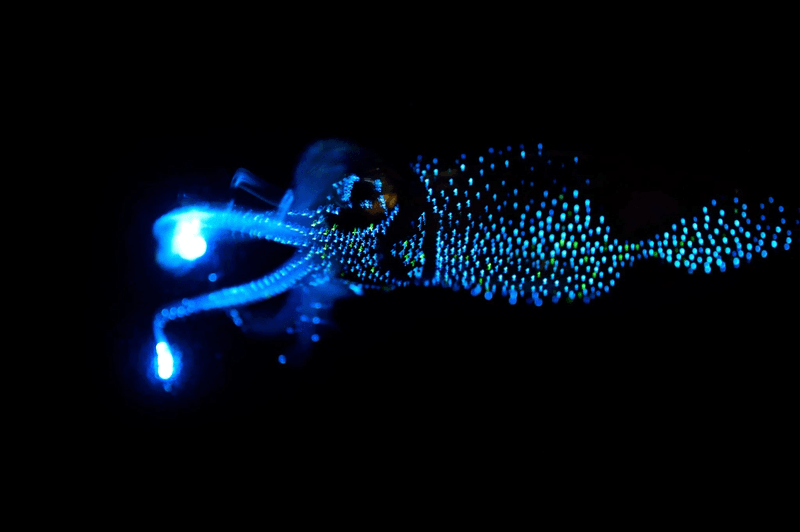
Every spring along Japan’s Toyama Bay, something magical happens – millions of tiny firefly squid create a breathtaking blue light show as they gather to spawn. These palm-sized creatures are covered in special organs called photophores that can flash in patterns, creating one of nature’s most spectacular light displays.
Scientists believe these lights help the squid communicate, attract mates, and confuse predators. The light organs on their tentacle tips can be so bright that fishermen use them as natural fishing lures! Japanese cuisine celebrates these luminous creatures too – firefly squid are considered a seasonal delicacy when they arrive each spring.
5. Flashlight Fish – Nature’s Headlights
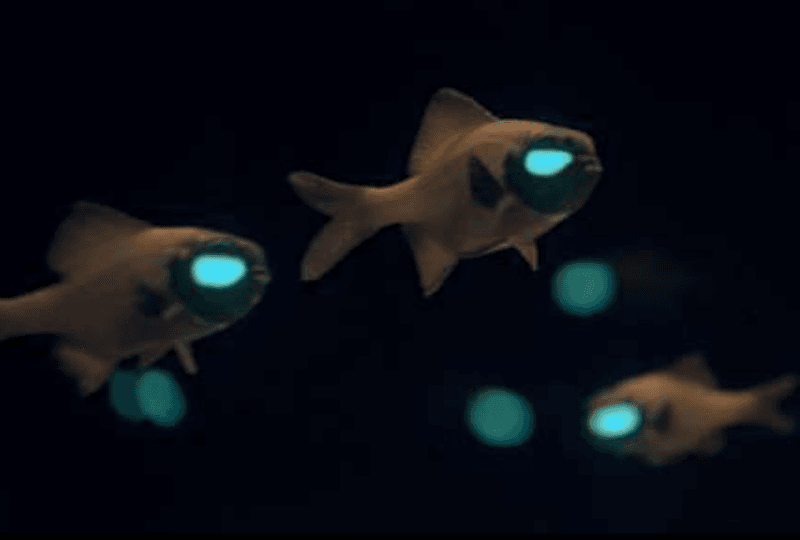
Imagine swimming through dark coral reefs with built-in headlights under your eyes! Flashlight fish have bean-shaped light organs filled with bioluminescent bacteria that create an eerie blue-green glow. They can control these natural flashlights by covering them with a special eyelid-like flap when they want to go dark.
These clever fish use their light in amazing ways – to attract tiny plankton for midnight snacks, to confuse predators with quick flashing patterns, and to communicate with potential mates. Some species even work together, using their combined glow to hunt as a group. The relationship between the fish and their light-producing bacteria is a perfect example of symbiosis – the bacteria get a safe home while the fish gets free light!
6. Atolla Jellyfish – The Burglar Alarm Of The Deep
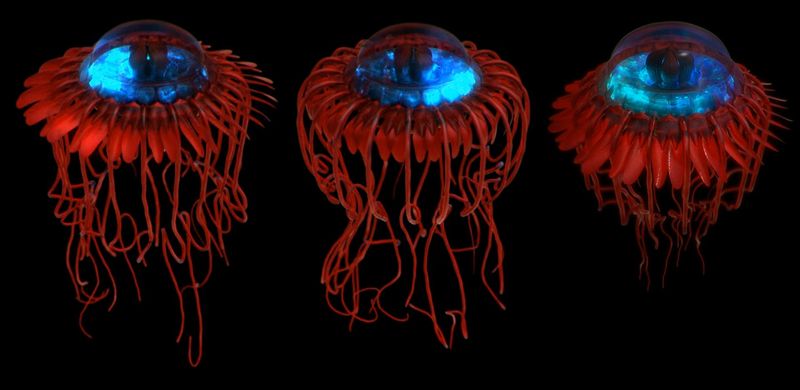
When in danger, the deep-sea Atolla jellyfish puts on a dazzling light show that marine biologists call the “burglar alarm” response. It creates waves of blue light that ripple across its bell-shaped body, hoping to attract larger predators that might eat whatever is attacking it!
This ruby-red jellyfish normally stays invisible in the darkness, but its desperate distress signal can be seen from an incredible 100 meters away in the clear ocean water. The Atolla’s unique light display was even featured in the BBC’s Blue Planet series, introducing millions to this unusual creature.
With one tentacle much longer than the others, this jellyfish can grow to about 20 centimeters wide and lives at depths of 1,000-4,000 meters where sunlight never reaches.
7. Dinoflagellates – Tiny Organisms, Spectacular Show
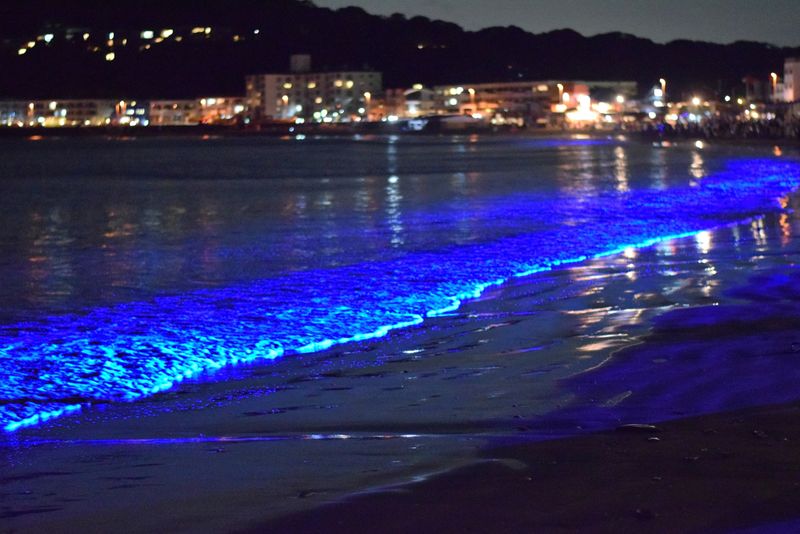
These microscopic creatures might be tiny, but when millions gather, they create some of the most magical scenes in nature – glowing blue waves that crash onto beaches around the world! Dinoflagellates are single-celled plankton that light up when disturbed, turning ocean movements into spectacular light shows.
The phenomenon, called “sea sparkle” or “blue tears,” happens when these organisms detect movement in the water. Scientists think this glow might scare away small predators or attract larger animals that would eat those predators. In places like the Maldives, Puerto Rico, and Australia, tourists flock to witness this natural light show.
Some species can be harmful, causing toxic red tides, but many simply create unforgettable blue magic when waves crash or boats pass through them.
8. Comb Jellies – Rainbow Light Dancers
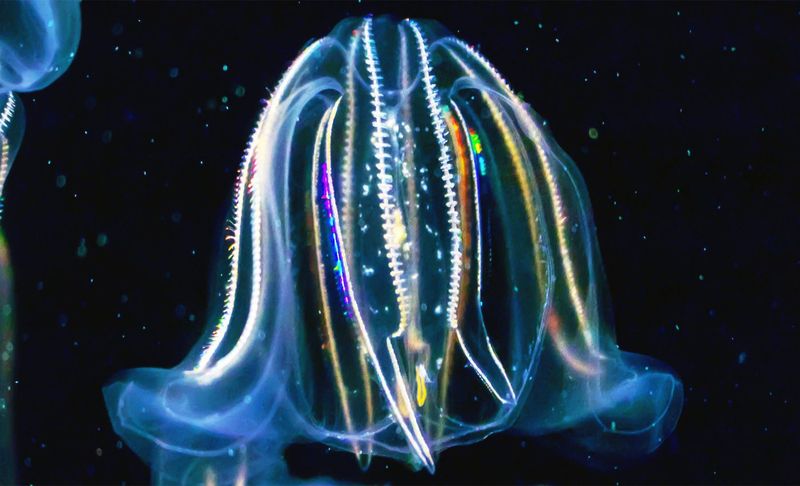
Unlike true jellyfish, comb jellies (ctenophores) don’t sting! Instead, they move through the water using rows of tiny hair-like cilia that refract light, creating beautiful rainbow patterns even in daylight. But that’s not all – many species can also produce their own blue-green bioluminescence at night, making them double light-show performers.
These gelatinous creatures have existed for over 500 million years, even before dinosaurs! Most comb jellies are predators that use sticky cells to capture tiny animals. The warty comb jelly can even glow brighter when disturbed, creating waves of light that travel around its transparent body.
Though they look delicate, these animals have become invasive species in some areas, outcompeting native fish for food resources.
9. Hawaiian Bobtail Squid – Tiny Glowing Masterpiece
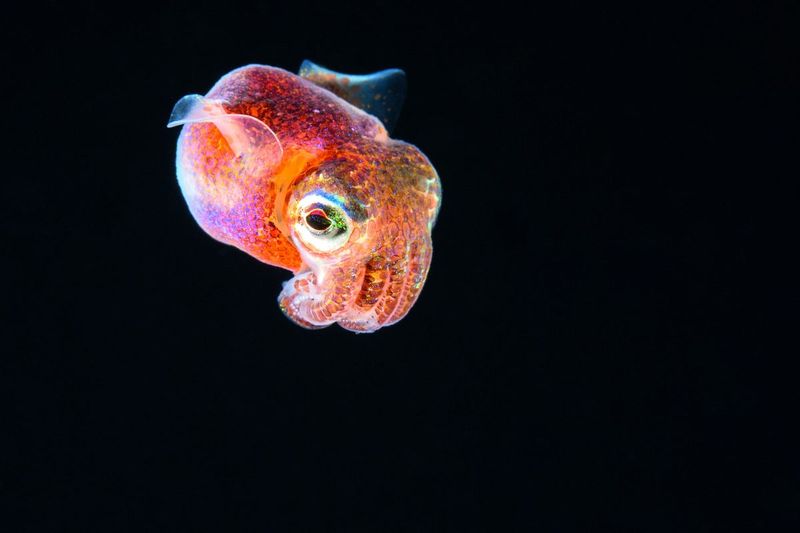
No bigger than a thumb, the Hawaiian bobtail squid has perfected the art of camouflage using light! This adorable creature buries itself in sand during the day and hunts at night, using a special light organ filled with bioluminescent bacteria to eliminate its shadow. Moonlight passing through its body would normally create a shadow on the ocean floor – a dead giveaway to predators below.
The squid solves this problem by controlling exactly how much light its bacterial partners produce, perfectly matching the moonlight intensity. This symbiotic relationship begins within hours of the squid hatching! The bacteria get a safe, sugar-rich home while the squid gets invisibility.
Scientists study this partnership to better understand human-microbe relationships in our own bodies.
10. Lanternfish – The Middle Ocean’s Living Lights
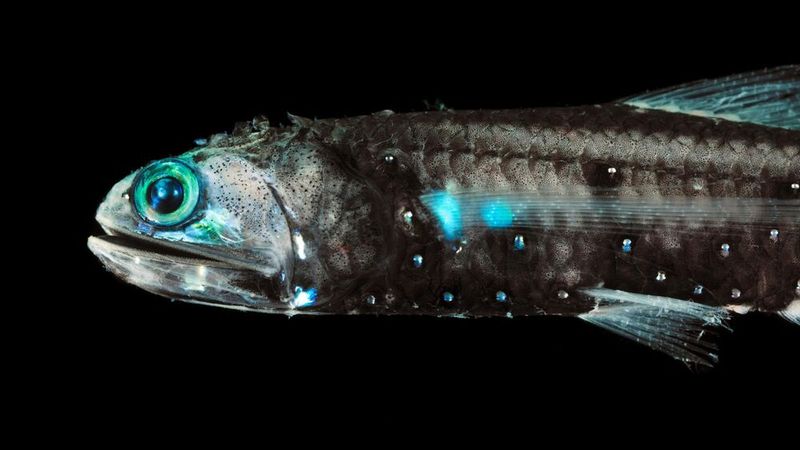
They might not look impressive, but lanternfish are among the most numerous vertebrates on Earth! These small, silvery fish make up about 65% of all deep-sea fish biomass and perform the largest animal migration on the planet. Every night, billions rise from depths of 1,000 meters to feed near the surface, then return to the darkness before dawn.
Their bodies are covered with light-producing photophores arranged in distinct patterns – like living constellations! Each species has its own unique light pattern, helping them recognize potential mates in the darkness. Some can even change their light colors or create quick flashes.
Though rarely seen by humans, these fish are crucial to the ocean food web, transferring energy between the surface and the deep sea.
11. Giant Squid – Elusive Deep-Sea Legend
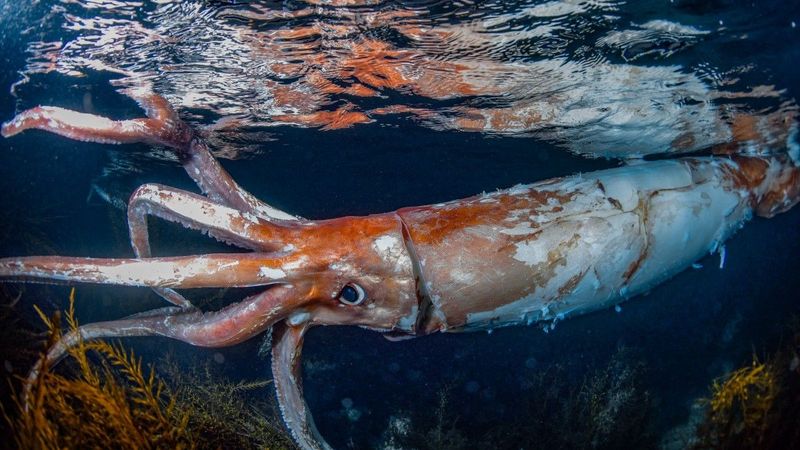
For centuries, sailors told terrifying stories about massive squid that could drag ships underwater. While the legends were exaggerated, giant squid are genuinely enormous – reaching lengths of up to 43 feet, including their long feeding tentacles! These mysterious creatures live in the ocean’s midnight zone, between 1,000-3,000 feet deep.
Giant squid have the largest eyes in the animal kingdom – the size of dinner plates – which help them detect the faintest light in their dark world. They hunt using two specialized tentacles that can shoot out to grab prey before pulling it toward their sharp, parrot-like beak.
Scientists have rarely observed living giant squid in their natural habitat. The first video footage wasn’t captured until 2012, making them one of the last true mysteries of the deep.
12. Goblin Shark – Living Fossil With Alien Jaws
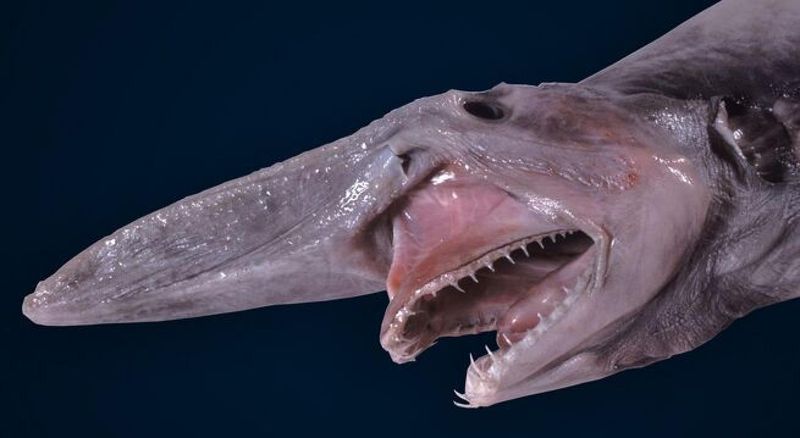
With a protruding sword-like snout and jaws that literally shoot forward to capture prey, the goblin shark looks like something from science fiction! This rare deep-sea predator has barely changed in 125 million years, earning it the nickname “living fossil.” Its pale pink coloration comes from blood vessels visible through its semi-transparent skin.
Goblin sharks hunt in complete darkness at depths of 4,000 feet or more. When their sensitive snout detects electrical signals from nearby prey, their jaws can extend forward faster than a blink of an eye – one of the most unusual feeding mechanisms in the ocean.
Despite their fearsome appearance, they pose no threat to humans since they live far too deep for casual encounters.
13. Barreleye Fish – The Fish With A Transparent Head
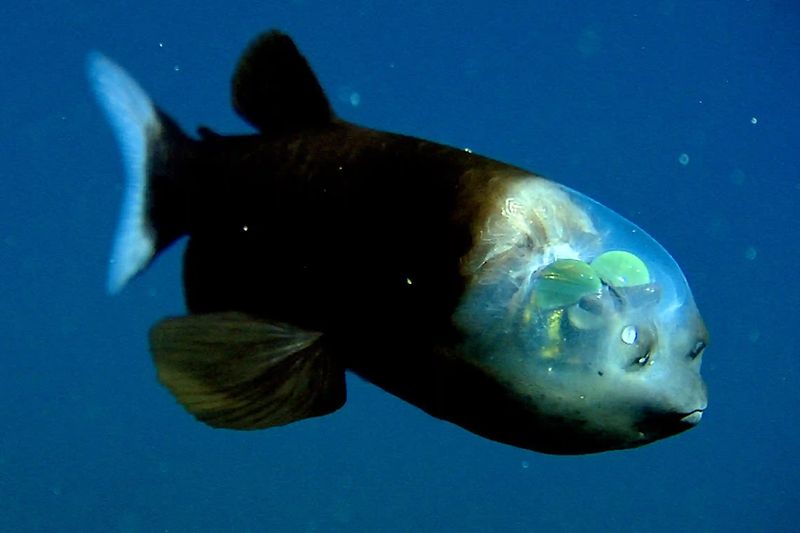
Imagine having a see-through head with eyes that can rotate inside it! The barreleye fish has evolved one of the strangest adaptations in the deep sea – a transparent dome filled with fluid where its eyes are housed. These tubular green eyes normally point upward, searching for prey silhouettes against the faint light from above.
When it spots something interesting, the barreleye can rotate its eyes forward to track its meal. The transparent head allows it to see in virtually any direction without moving. This odd fish lives between 2,000-2,600 feet deep in the Pacific Ocean.
Scientists didn’t even realize the head was transparent until 2004, as previous specimens were damaged when brought to the surface. The barreleye’s delicate structure simply couldn’t survive the pressure change!
14. Fangtooth Fish – Record-Breaking Teeth In A Tiny Package
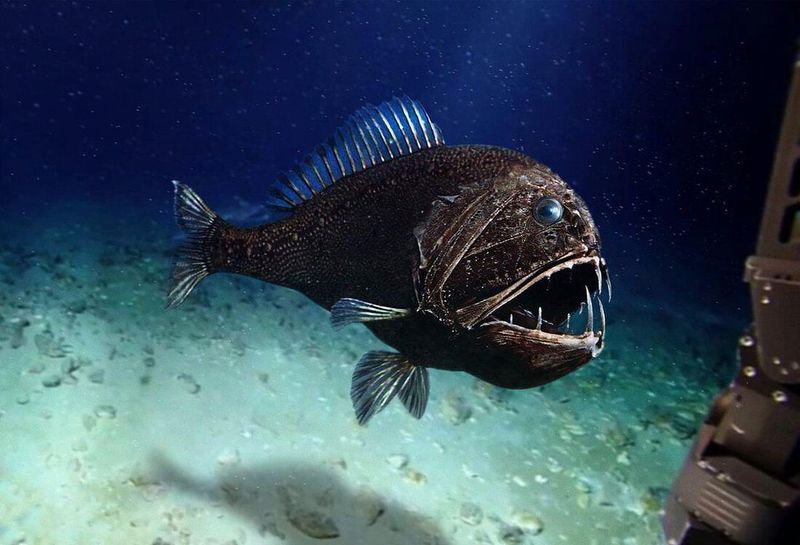
Don’t let its small size fool you – the fangtooth fish has the largest teeth relative to body size of any fish in the ocean! These fierce-looking deep-sea dwellers are actually only about six inches long, but their massive fangs are so large they can’t fully close their mouths. Special sockets on the roof of their mouth accommodate these impressive teeth.
Fangtooths live in the bathypelagic zone, between 3,000-16,000 feet deep, where food is scarce and every meal counts. Their dark brown to black coloration makes them nearly invisible in their lightless home.
Despite their terrifying appearance, fangtooths are relatively common and pose no danger to humans. Their specialized teeth help them hold onto the rare prey they encounter in the food-scarce abyss.
15. Yeti Crab – Hairy Chef Of Hydrothermal Vents
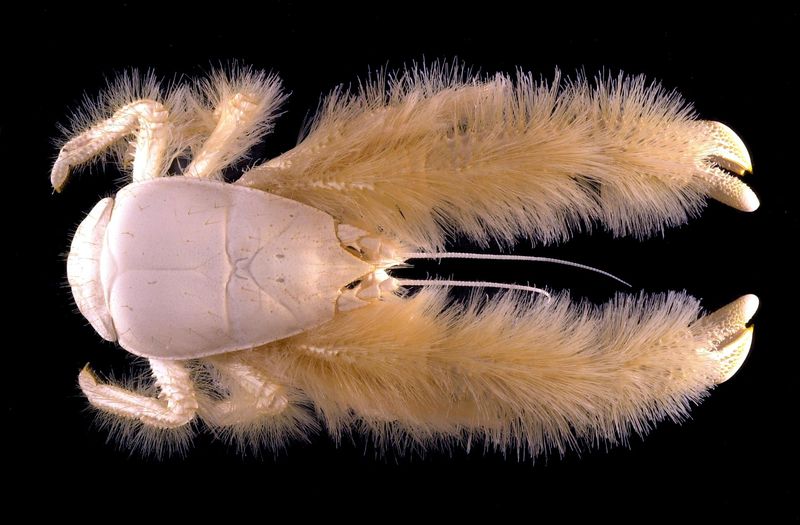
Discovered in 2005, the yeti crab looks like it’s wearing fuzzy mittens! This unusual creature lives near hydrothermal vents – underwater hot springs where temperatures can reach 750°F. Its hairy arms aren’t just for show – they’re covered in bacteria that the crab cultivates like a tiny farmer.
The yeti crab waves its arms over the hot vents, creating the perfect temperature for its bacterial garden to grow. When hungry, it simply scrapes the bacteria off its hairs and into its mouth. Talk about having food right at your fingertips!
These blind crabs survive in one of Earth’s most extreme environments, where toxic chemicals would kill most animals. Scientists believe studying these resilient creatures might help us understand how life could exist on other planets.




